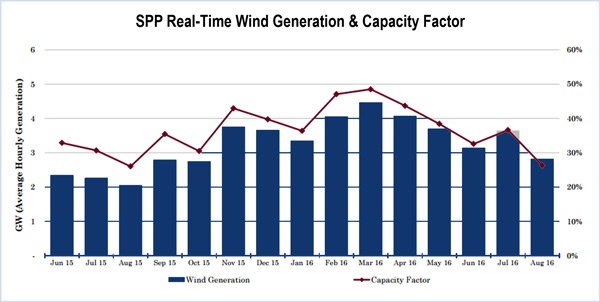SPP’s Exit Study Task Force, formed to provide technical support and advice regarding Lubbock Power & Light’s move to ERCOT, conducted its first meeting last week.
The Public Utility Commission of Texas asked SPP and ERCOT to work together to study the implications of LP&L’s plans to migrate 430 MW of its load from SPP to ERCOT in June 2019. (See Texas PUC OKs ERCOT, SPP Studies on Lubbock Move.)
One issue is who will pay for the studies. PUC Chair Donna Nelson has said the burden shouldn’t fall on ERCOT ratepayers, suggesting during a Sept. 22 meeting LP&L should either fund the work or that the issue should be open “pending the outcome of the studies.”
“‘Depending on the outcome’ … I don’t know what that means,” said LP&L legal counsel Chris Brewster during the task force’s first meeting Friday.
Oklahoma Gas & Electric’s Jake Langthorn, the group’s chair, told the group the study costs will become clear once the scope and schedule are developed. SPP staff will begin its assessment by using its normal base cases from its near-term and 10-year studies.
“We’ll evaluate the system with Lubbock in SPP and without. In each case, we’ll evaluate the system against SPP planning criteria and NERC criteria to see whether we’re outside the acceptable ranges,” said Antoine Lucas, SPP’s director of transmission planning. He said the study will seek to identify any new transmission projects needed — or planned projects that can be deferred — as a result of Lubbock’s move.
LP&L representatives pushed SPP, which has targeted an April completion date, to accelerate its timeline.
ERCOT has said it will complete its assessment by the end of the year.
SPP says its existing planning workload will keep it from completing its work by the end of the year as ERCOT has promised.
“Having said that, we’re expecting it’s more than 90% in place right now,” said Lanny Nickell, SPP’s engineering vice president. “Once we put the schedule together, we can identify when we need it 100% finalized.”
SPP staff said it is meeting with ERCOT staff next week to review all questions posed by LP&L.
The task force is composed of four members of the Strategic Planning Committee and two each from the Transmission and Economic Studies working groups.
Wind, Coal Generation Continue to Rise, Fall

Wind energy continues to rise in the SPP footprint and coal-fired generation continues to drop, according to the Market Monitoring Unit’s State of the Market report for this past summer.
The MMU said wind generation accounted for more than 12% of all energy produced in 2016, compared with 10% in 2015 and 9% in 2014. At the same time, coal generation’s share dropped to 51%, down from 62% in 2014.
Natural gas prices rose from this spring’s record low levels, the MMU said. The average price at the Panhandle Hub was $2.51/MMBtu this summer, compared with $2.60/MMBtu in 2015 and $4.00/MMBtu in 2014.

| SPP Market Monitoring Unit
The “wind alley” of the Texas panhandle, western Oklahoma and western Kansas continues to experience most of the SPP footprint’s congestion. However, the MMU said, congestion has increased in southeast Kansas and parts of Arkansas, which it attributed to higher summer loads and planned generation and transmission outages.
SPP, MISO Shared Joint Study Needs List
SPP staff told the Seams Steering Committee last week it has made available to stakeholders the final needs list for the 2016 Coordinated System Plan study with MISO and is asking for solutions by Nov. 30. Four of the needs were identified by both RTOs and three were cited by SPP. (See MISO-SPP Study Scope Finalized; Stakeholders Doubtful Projects will Result.)
Staff will review the submittals and share them at their next Interregional Planning Stakeholder Advisory Committee meeting.
SPP staff said a joint model is being developed, but it will likely have differences with each RTO’s regional models, and that some of the identified regional needs may not show up in the model.
Separately, SPP and Associated Electric Cooperative Inc. have developed models and assessed the needs for the target areas, posting them to allow stakeholders to submit solutions. The two organizations requested input be submitted by Nov. 7.
SPP Interregional Coordinator Adam Bell told the committee the Northeast Oklahoma target area will no longer be evaluated in the SPP-AECI joint study because of a change of power suppliers in the region. He said the change “resulted in there no longer being potential needs observed on both sides of the SPP-AECI seam.”
— Tom Kleckner





